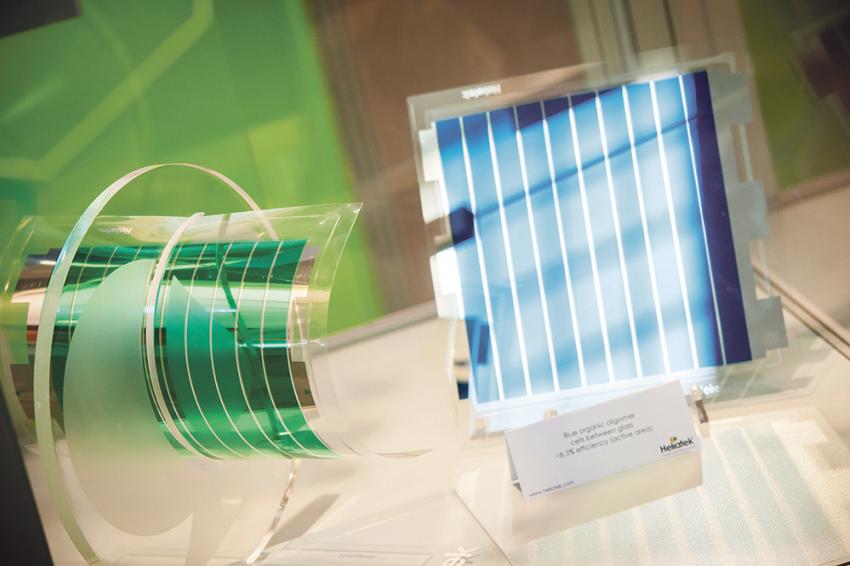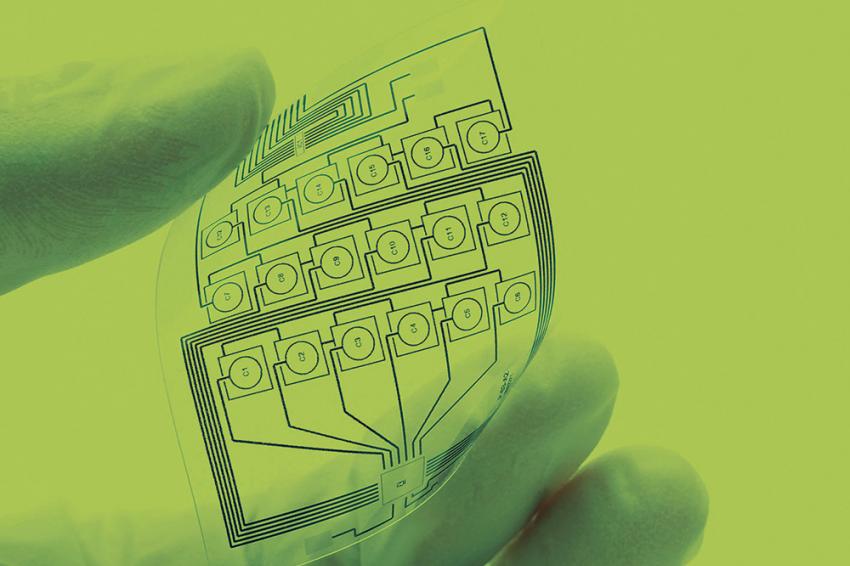On the Way to the Internet of Everything
New Technologies Will Make It Possible to Integrate Intelligent Systems into Everyday Objects
The motto of the 11th Plastic Electronics Conference is “Enabling the Internet of Everything”. The conference will provide a vital forum for the full scope of organic electronics. It will take place on October 6–8, 2015, in Dresden, Germany, the same time as Semicon Europa 2015. More than 400 exhibitors and over 6,000 professional visitors from around the world are expected to attend Europe’s leading semiconductor industry trade fair.
The Plastic Electronics Conference and Semicon Europa 2015 are the only events in the world that bring new technologies like printed, flexible, organic, and large-area electronics together in the same place with the semiconductor industry’s entire traditional value-added chain, from materials and equipment to chip manufacturers and important clients.
Because it is only now becoming clearer that these two industry segments share a common future, this year’s conference program will also reinforce that combination. Until now they have usually been discussed separately and the reason is that “plastic” electronics are very new and innovative. This is a field that is only just shifting from research and development to the marketplace.
The technologies that have been developed in this new field are indeed attractive and they will advance the entire industry. Combining conventional semiconductor chips with new, smart sensors or multi-functional systems on a flexible substrate would be useful in many areas and therefore applies to megatrends like the internet of things, wearable electronics, smart buildings, and ambient assisted living as well as traditional industries like automotive engineering.
For one example, printed sensor systems that are integrated into the packaging for delicate drugs or food can be used to document seamless adherence to the cold chain. These kinds of “smart” systems can be made from a wide range of materials – from plastic sheets to glass bottles to textiles.
From Vision to Reality
Ideas that will reach much further into the future than these applications will be discussed at the 11th Plastic Electronics Conference. That is because heterogeneous integration processes today allow the processing power and miniaturization of traditional silicon chips to be combined with other functionalities, including large-area sensors or systems for harvesting energy from a wide range of sources. Technologies like these make it possible to turn a vision into a reality that will widely expand the internet of things and services. That is why the theme of this year’s conference is “Enabling the Internet of Everything”.
Experts assume that the new technologies can reach the market quickly. On one hand, they will make it possible to integrate intelligent systems into everyday objects like textiles, home furnishings, and packaging. “Plastic” electronics create the conditions for continuously making electronic systems smarter, thinner, and ultimately even capable of being integrated or implanted in clothing. On the other hand, the new technologies could perfectly satisfy the industry’s desire for multifunctionality at relatively low cost. It’s worth it: Sensors are an essential component of these “intelligent” everyday objects and market researchers predict that 100 million pieces will be anywhere and everywhere by the year 2020.
Making this vision a reality, however, will require manufacturing processes that allow for improvements to “plastic” electronics components’ performance and reliability. Integration and packaging methods will be needed to introduce silicon chips (microcontrollers, for example) into flexible, elastic electronic systems.
Conference Highlights
The Plastic Electronics Conference 2015 will address all these questions in discussions covering three areas: technology/materials, manufacturing, and business cases. The main speakers are well-known experts like Prof. Donal Bradley of Imperial College London, one of the co-inventors of organic electronics. The topics cover a wide range including organic photo-detectors and image sensors on a plastic substrate, organic light-emitting diode (OLED) manufacturing and measuring systems for quality control in roll-to-roll processing, and new transfer methods for manufacturing flexible displays.
In his presentation, Andreas Schaller of Robert Bosch will explain which options his company is already using for additive production and printed electronics. Dresden-based Heliatek will present its organic solar films. Arne Fleissner, development engineer with Osram OLED, will look at the status and progress in OLED lighting. In his keynote speech, Mark James, director of research and development at Merck Chemicals, will present concepts for high-performance semi-conductor manufacturing with organic substances and with printing as well as photolithographic processes. Scientists from well-known research institutions like Fraunhofer FEP and Fraunhofer ENAS will also give presentations in Dresden that will provide a glimpse into current research.
The Plastic Electronics Conference 2015 will be a unique chance to explore the opportunities that innovations in the field of organic and large-area electronics offer. Heterogeneous integration of “plastic” and traditional components is another milestone in that process. Semicon Europa 2015 will offer ideal opportunities for exchanges among specialists and for networking, including across specialized fields. Research, economics, and policy will all come together. Additionally, the Innovation Village will integrate founders with funders in this comprehensive industry gathering. In all, the Plastic Electronics Conference 2015 will be the perfect launch pad for strategic partnerships.
In developing new technologies and products, organic electronics can also build on companies in the semiconductor industry’s traditional value-added chain. Their long experience can help significantly reduce the distance between lab and fab.
Contact
Semi Europe
Helmholtzstr. 2 9
10587 Berlin
Germany






